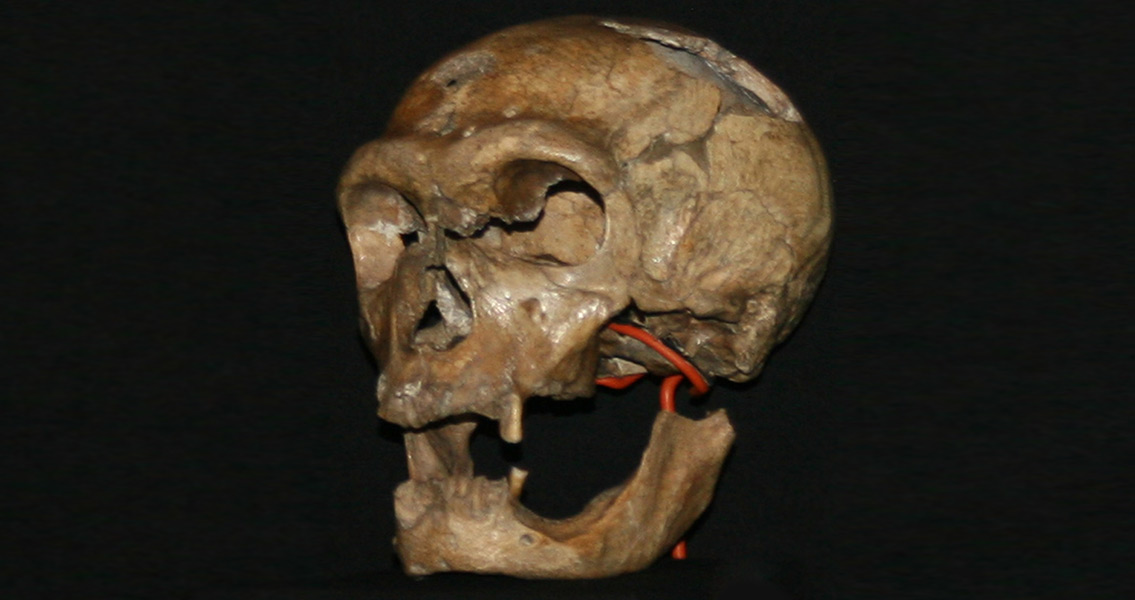<![CDATA[For the first time evidence has been presented of cases of congenital clefts of the arch of the atlas in Neanderthals. The abnormality, which is exceedingly rare in humans, affects the joint between the top of the spine and the base of the skull. The developmental anomaly is usually caused by a failure of the anterior arch to fuse during the ossification process. Typically, the defect has no clinical ramifications for humans, but a host of anthropologists and biologists have argued that the presence of such congenital skeletal anomalies can be used as a marker of inbreeding or endogamy. Providing a useful insight into Neanderthal habits, the new study has the potential to help develop the story of their decline and eventual disappearance. Published in the online journal PLOS ONE, the study analysed Neanderthal skeletons from the El Sidron site in Northern Spain. Of three sets of remains which were possible to examine from the site, two of the atlases exhibited congenital clefts. The first demonstrated a cleft of the posterior arch, an ailment present in between 0.73% and 3.84% of modern human populations, while the second had a cleft of the anterior arch, present in between 0.087% to 0.1% of modern human populations. El Sidron is an ancient cave in the Pilona municipality of Asturias. First discovered in 1994, the 600 metre long cave contains an assemblage of over 2,400 fossils which have been dated to 49,000 years ago. A minimum of thirteen Neanderthal individuals have been identified in the cave, including seven adults, three adolescents, two juveniles and one infant. The study's lead authors, Luis Rios and Antonio Rosas, used the binocular lens and Environmental Scanning Electron Microscope at the National Museum of Natural History in Lisbon, Portugal, to analyse the areas of interest on the Neanderthal bones. Conventional radiographs were also taken of the three Neanderthals. As a means of comparison, the same tests were also carried out on a range of modern human skeletons dating from the eleventh to the seventeenth centuries. The results of the study provide demographic information about the neanderthal community which lived in the area 49,000 years ago, especially when taken alongside the results of earlier studies of dental anomalies in the same remains. "Based solely on the findings for the atlas presented here and on the previously reported cases of dental anomalies the number of individuals from El Sidrón presenting congenital conditions would range from a minimum of two to a maximum of four." This presence of anomalies associated with close, familial relations suggests that the Neanderthal community of El Sidron was built on either endogamy or inbreeding. "The observation that at least two out of three observable atlases present low frequency congenital anomalies supports previous genetic and dental evidence from El Sidrón indicating that these Neandertals constituted a group with close genetic relations." As scientists continue to struggle to explain why the Neanderthals disappeared, this latest study provides some useful additional context to the developing idea in paleogenetics that around a million years ago a decline in Neanderthal population led to them becoming increasingly isolated. "The congenital clefts of the atlas from the Neandertals of El Sidrón would fit this broader scenario for human population dynamics during the Pleistocene. Specifically for Neandertals, as recently summarized a similar general picture emerges from recent advances in paleogenetics, which posits a long-term small and decreasing population size sometime after 0.5–1.0 million years ago, with reduced and isolated groups. The consequence would be increased inbreeding at times." The study authors acknowledge that the clefts could also be the result of environmental conditions. Through further analysis of other Neanderthal remains for similar congenital defects, greater insight into Neanderthal families and communities could be possible. For more information: www.plosone.org Image courtesy of Wikimedia Commons user: 120 / V. Mourre ]]>
Congenital Anomalies Point to Neanderthal Inbreeding
